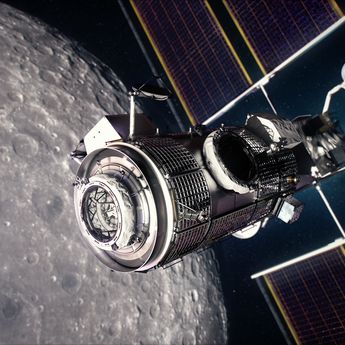4 steps to protect space environment
We recognise the critical importance of space as an environment that must be protected as a key component in the interest of the planet and the future generations.
At Airbus, we are actively developing innovative solutions to address challenges linked to the use of space, such as space debris, orbital congestion, and the long-term sustainability of space operations.
After six decades of spacecraft launches in outer space, more than 13,000 tonnes of material are floating around in low Earth orbit, turning space into an immense junk yard.
Because of its high speed and volume, orbital debris - made up of human-made objects, such as pieces of spacecraft, and parts of rockets and satellites - poses a critical threat to the use of space.
And as space constellations grow rapidly, there is an increasing need to absolutely avoid creating more debris, know where all hazardous space objects are at all times, safely remove space debris from orbit and begin to design long-term sustainable space practices, including circularity in space.
Discover Airbus technology against space debris

Avoiding the creation of any additional debris
We design satellite structures to withstand micrometeoroid impacts and then prevent fragmentation, ensuring that spacecraft remain intact throughout their operational life.
We also conduct safe deorbit manoeuvres to ensure controlled or assisted re-entry of defunct satellites, thereby reducing debris generation.
Finally, a "Design for Demise" approach to material selection and passivation techniques (fluids, chemicals) allows a spacecraft to be safe for disposal at the end of its life.

Understanding & navigating space
Airbus develops technologies to better understand the position and velocity of all space objects, Space Situational Awareness (SSA), with sensors from Earth such as the ART robotic telescope and in space with the SBOC optical camera for debris tracking and detecting.
Airbus also uses its dedicated Perturbations Orbit Determination and Analysis toolKit (SPOOK) to process data in support of Space Traffic Management (STM) and safer space operations.

Safely removing debris from space
Airbus is developing technologies for active debris removal in space with the support of the program TechForSpaceCare from CNES. As part of the RemoveDEBRIS mission,the company has demonstrated various capture systems, including a harpoon to secure targets and a net designed to capture objects up to 2 metres in diameter.
Airbus has also recently built detumbling systems, grapples and visual markers to ease eventual removal of space objects.

Engaging the ecosystem into new practices
By co-initiating The Zero Debris Charter and its technical booklet, Airbus aims for achieving debris neutrality in space by 2030 and across the whole space ecosystem, involving collaboration among nations and companies.
Airbus also opens ways to more circularity in space operations, by embracing innovations like In-Situ Resource Utilisation (ISRU) and In-Space Manufacturing (ISMA), aiming to reduce need for launches and maximising resource reuse.
Airbus technology for space debris mitigation
Demisable joints
Airbus's demisable joints are designed to weaken spacecraft connections during re-entry, ensuring that they break apart and burn up in the atmosphere. This reduces space debris and improves safety.
Assisted reentry, a key enabler to reduce casualty risk
Assisted reentry is an innovative reentry strategy for LEO satellites, controlling them down to a very low altitude (~150km perigee) to reduce uncontrolled phase duration. This limits the spread of debris to uninhabited areas, reducing the risks of casualties. The first assisted satellite re-entry was successfully tested with Aeolus. The satellite entered the atmosphere safely.
Aornis Robotic Telescope
The Airbus ART for SSA is designed to enhance space situational awareness by providing accurate and timely data to manage risks during satellite reentry, ensure safe operations and reduce debris hazards.
Passive small debris removal concept
Airbus investigates technologies, made of soft outer shells and harder inner cores, able to fragment and capture small debris in orbit ; or to let them through to lower their energy and deorbit them.
The latest Space news
in the spotlight
-
 Stories Innovation
Stories InnovationImproving the world we live in with AI-powered products
Some Airbus space products help address land use issues by using artificial intelligence to improve satellite imagery analysis. -
 Press releases Space
Press releases SpaceAirbus awarded Oberon satellites contract by UK MOD
-
 Press releases Space
Press releases SpaceAirbus-built SpainSat NG-I satellite successfully launched
-
 Stories Space
Stories SpaceKeeping the lights on for the lunar Gateway HALO module
-
 Stories Space
Stories SpaceInside Atlid, mastering atmospheric LiDAR technology for space

